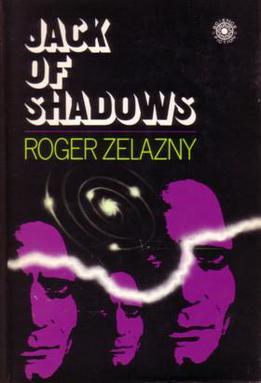As my wife depicted brilliantly on her blog (dtemama.com), we took the kids to the Pennsylvania Renaissance Faire this weekend. It was quite the initiation for them. Though truth be told, my visiting tenure there only dates back to the first time my wife took me with her family (back when we were still dating). But she has been going sporadically since her teen years and it seemed like something the kids would enjoy (if not fully understand).
It turned out to be a fun time had by all and it couldn’t have been a better time to go. The weather was just right for it, and it happened to be Children’s Fantasy Weekend. So as we walked in the gates the kids were handed pirate treasure maps on which they were instructed to find several letter clues around the fairgrounds that would spell a password to get them some pirate treasure. While the map was a tad confusing (it was nice of them to label all of the roads on the map, though it would have helped if there were also matching signs on the roads themselves), the kids managed to keep up with our meandering trek around the park and go excited every time they found a clue. We took in some fun shows including the birds of prey demonstration, a human chess match, as well as a the jousting match at the end of the day. Though despite my encouragement to try some authentic Renaissance fare, the kids opted for pizza for lunch.
Grasshopper soaked it all up like a kid in a candy store. As we passed shops he would shout out “Look! A Harry Potter cape!” or “Look at that pirate skull!” During a lull where my sister-in-law was waiting for the next glass-blowing demo and my son was decidedly too hyped up on lunch and excitement to be trusted in the vicinity of dozens of hanging glass bobbles, I took him away from the group for a father-son foray into a sword shop that was setup to look like a beached pirate ship. Both on the way up the walk to the opening and through the entire tour around the store he couldn’t be more exhilarated. He climbed on the cannons and pretended to fire them. He sparred with another boy with some wooden practice swords. He pointed out dozens of exciting decorations and items of interest. And impressively managed to refrain from grabbing any of the real swords upon my explanations of the real dangers in doing so. By the time the human chess match was underway in the late afternoon, he was petering out – he nearly fell asleep in my lap (most likely the occasional sword fighting in the match was all that was keeping him from conking out). But he managed to get a second wind long enough for dinner and the joust (though he was dead asleep long before we arrived back home).
Cricket was equally sparkly-eyed over the events and scenery of the Faire. Though much of her interest was targeted toward princess and fairy-related items (though she was also excited by dragons, swords, and pirates). She wanted to see and try everything (including a turkey leg – I believe her uncle let her try some of his). Being nearly 7, she was a little more understanding of the fact that the Faire was a depiction/dramatization of a period in history. Though I’m sure her concepts of the history of humanity is very spotty at best (she finds it incredulous that there weren’t things like Wii and iPhones back when I was her age). There wasn’t a shop in which she didn’t find something she wanted, though we did promise each of them one souvenir and so she was good about cataloging the things she liked so she could make her choice by the end of the day – she went with a princess hat (conical silky hat with frilly edges and streamers – I’ll take that over the $75 dresses and $40 parasols she had her eyes on earlier in the day). Her brother opted for a small wooden sparring sword which took all of his might not to swing all over the place as we walked around the rest of the day.
If there was any complaints I could offer on the day, there would only be one small one: this weekend was supposedly Children’s Fantasy weekend, and though there were disclaimers about the joust being graphic prior to the start of it, I really did not expect the level of violence that was displayed to an audience knowingly more heavily weighted with children than usual. It started off as I’m accustomed to – the usual grandstanding hoopla that opens things up and gives the event personality and color. Then the jousting commences, then the sword play, then some more talk as you think the bad knight is on the ropes and read to give up. And then the bad guy claims to be secretly working for the King of Spain and an attack force moves in and explosions start up (even up to this point, though the booms are a bit loud, I’m still feeling this is all fairly family-friendly). Then, to end the confrontation, the good knight, who has the bad knight on his knees after a stab to the gut, slices the bad knight’s throat and fake blood drools from his neck and spouts out of his mouth. Grasshopper’s point of view prevented him from seeing that particular bit, though I doubt he would have understood it to question it. But Cricket, who was further down the bench near her grandparents got an eyeful of it. When I asked her after what she thought of the joust, she commented that it was interesting, but she wasn’t sure why the guy spit out cherry juice at the end (I assume my in-laws threw that explanation out there right after the shock of the ending faded). So I guess there is no particular harm done, and I can appreciate realistic drama and effects as much as the next guy (as a guy, I thought it was awesomely done), but I found it a little surprising given the theme of the weekend.
Anyway, it was a long day and everyone seemed to have a great time. When they were asked what they favorite parts of the Faire were, the kids both stated that they liked the ship-swing ride and playing with the hula hoops (they’re kids – it’s all about engagement). I’m sure that this is the start of a semi-regular tradition as I’m sure they’re going to want to go back over and over again. And I don’t mind one bit. To see the world of the past light up in a kid’s eyes like a new and exciting place brings a child-like gleam into my eye.
 On the suggestion of a family member, I recently read an older sci-fi/fantasy novel called Jack of Shadows by Roger Zelazny (the person recommending it is an English professor who loves Doctor Who, so it is easy to give his recommendation some credence). I am being accurate in labeling it both science fiction and fantasy as it takes place in a distance future where the Earth has long since stopped rotating (to be more accurate, it is in synchronous rotation) and while the residents of the day-side have continued to advance in science, the dark side has taken to the arcane arts and maintains a feudal society based on seats of magical power. In this world, the protagonist, Jack of Shadows, was born of the twilight zone and as a result has magic that is rooted to shadows themselves rather than any geographical location.
On the suggestion of a family member, I recently read an older sci-fi/fantasy novel called Jack of Shadows by Roger Zelazny (the person recommending it is an English professor who loves Doctor Who, so it is easy to give his recommendation some credence). I am being accurate in labeling it both science fiction and fantasy as it takes place in a distance future where the Earth has long since stopped rotating (to be more accurate, it is in synchronous rotation) and while the residents of the day-side have continued to advance in science, the dark side has taken to the arcane arts and maintains a feudal society based on seats of magical power. In this world, the protagonist, Jack of Shadows, was born of the twilight zone and as a result has magic that is rooted to shadows themselves rather than any geographical location. Per the suggestion of a friend/colleague, I located and read this first of three books by Barry Hughart in the
Per the suggestion of a friend/colleague, I located and read this first of three books by Barry Hughart in the  As promised, this review is close on the heels of my review of book three (mostly because I pretty much read them back to back). Overall I’m definitely getting into the flow of these books and I’m interested to see how long they will stretch out.
As promised, this review is close on the heels of my review of book three (mostly because I pretty much read them back to back). Overall I’m definitely getting into the flow of these books and I’m interested to see how long they will stretch out. I’m writing this post belatedly because I’ve since read the fourth book as well and will likely start the fifth book soon. But I’ll attempt to try and keep the events separated enough now to review the third volume (and I’ll likely write another post shortly reviewing the fourth). Anyway…
I’m writing this post belatedly because I’ve since read the fourth book as well and will likely start the fifth book soon. But I’ll attempt to try and keep the events separated enough now to review the third volume (and I’ll likely write another post shortly reviewing the fourth). Anyway…